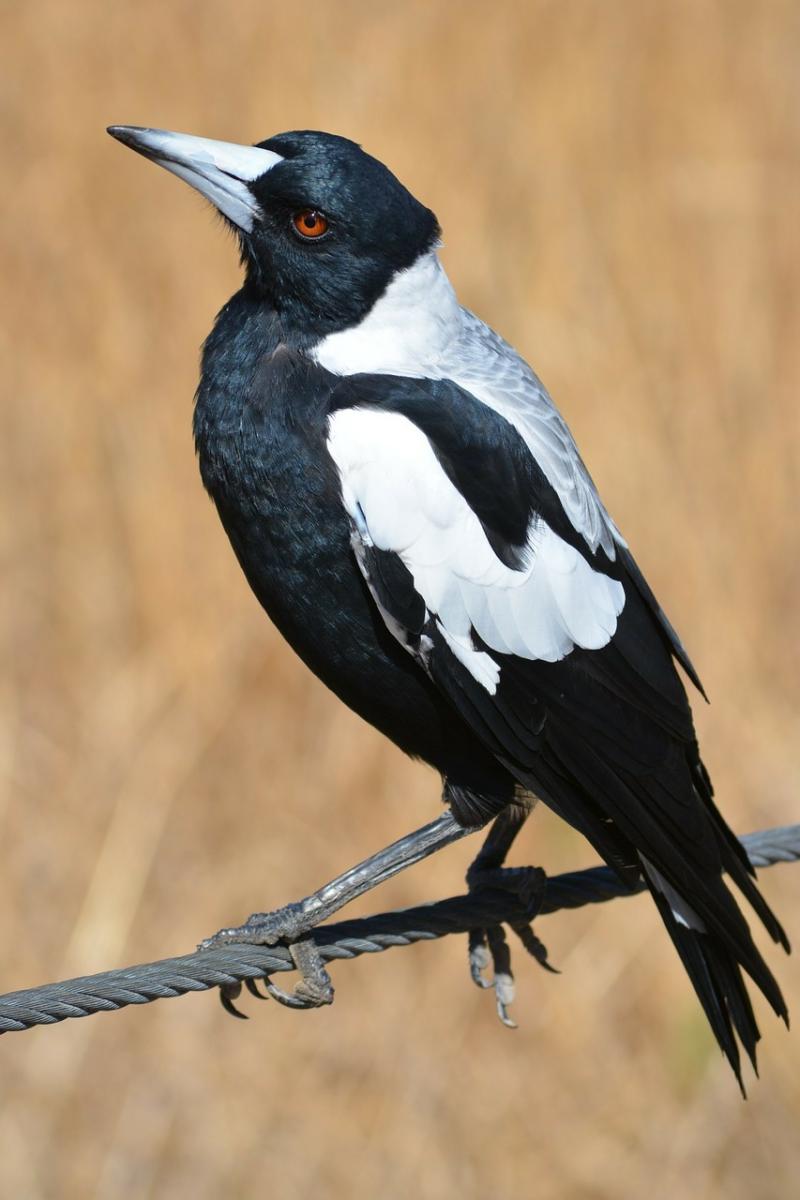Latest news
Prepare for Magpie Swooping Season!
It is magpie breeding season and swooping will be at its peak this September.
Magpies nest in bushland, parks, open spaces and grass areas with tall trees.
Only a small percentage of magpies swoop, but male magpies swoop, screech and clap their beaks at those they deem threatening in order to defend their eggs or newly-hatched young, usually within 50m from their nesting site.
Swooping only lasts for 6 to 8 weeks, up until their young become fledglings and leave the nest.
How to avoid being swooped at:
- Avoid known nesting areas and take alternative routes while cycling or walking.
- Wear a wide brim hat, sunglasses and carry an umbrella. You can attach googly eyes to the back of your hat and on your umbrella too, as they’re less likely to swoop if they think you’re looking at them.
- Travel in groups, as magpies are more likely to swoop at individuals.
- If you’re cycling, wear a helmet and sunglasses, try to walk your bike instead of riding it while passing nesting sites, and attach a bike flag.
- Attach cable ties to your helmet if riding a bike or skateboard to keep magpies at a distance while swooping.
- Avoid harassing or provoking magpies as this will only encourage their aggression. Magpies are protected throughout NSW, and it is against the law to kill the birds, collect their eggs, or harm their young,
- Don’t stop by a nesting area, keep moving forward.
For more information click here

All native mammals, birds, reptiles and amphibians are protected under the Biodiversity Conservation Act 2016. It is against the law to harm native animals or to take them from the wild. A licence is generally required from the NSW Office of Environment & Heritage to keep native animals as a pet.
Our recent bushland fauna surveys identified over 130 native species, including 12 that are threatened by extinction. Some of the endangered animals that live and forage in our city include:
We're focused on protecting these species and need to look after their environments to ensure that they thrive in the City.
What you can do
Your help can directly affect the prosperity of threatened animal populations. Creating habitat within your property, such as backyards, balconies, common areas and school grounds, is a great way to provide a safe and welcoming environment for wildlife.
Here are some of our top tips to help create your own slice of backyard wildlife heaven:
- plant dense, local indigenous shrubs and grasses to provide food and shelter for native birds and insects
- Banksias, bottlebrushes, grevilleas and wattles are ideal for nectar sourcing birds such as lorikeets and honeyeaters as well as attracting insects such as butterflies
- Eucalypts and Casuarinas provide fruits for seed eating birds such as finches, parrots, and rosellas. Flying foxes and possums also enjoy fruit bearing plants
- provide water through a birdbath or small pond for birds, frogs and lizards
- avoid using herbicides and pesticides such as snail baits which can harm indigenous wildlife. Try chemical-free gardening instead
- don't feed birds, possums or other animals as it encourages the common and most aggressive species, often at the expense of others. More importantly, it may actually be making the birds unwell as it’s not their natural food. Think about planting what these animals prefer to eat and leave a water source out for them instead.
Visit Habitat Stepping Stones for more ways to support our local wildlife.
Injured Wildlife
If you come across an animal that is in distress or injured, there's help close at hand.
Call your local wildlife rescue group, where volunteers specialise in rescuing and caring for our native fauna. They will let you know what you can do to help or will send out a volunteer if they can.
WIRES
p: 1300 094 737
Sydney Wildlife
p: 9413 4300
In the meantime, if you have an injured or orphaned animal:
- handle the animal as little as possible
- place it in a towel or blanket
- place it in a box in a warm, quiet room and do not give it food.
Bushland Fauna Surveys



